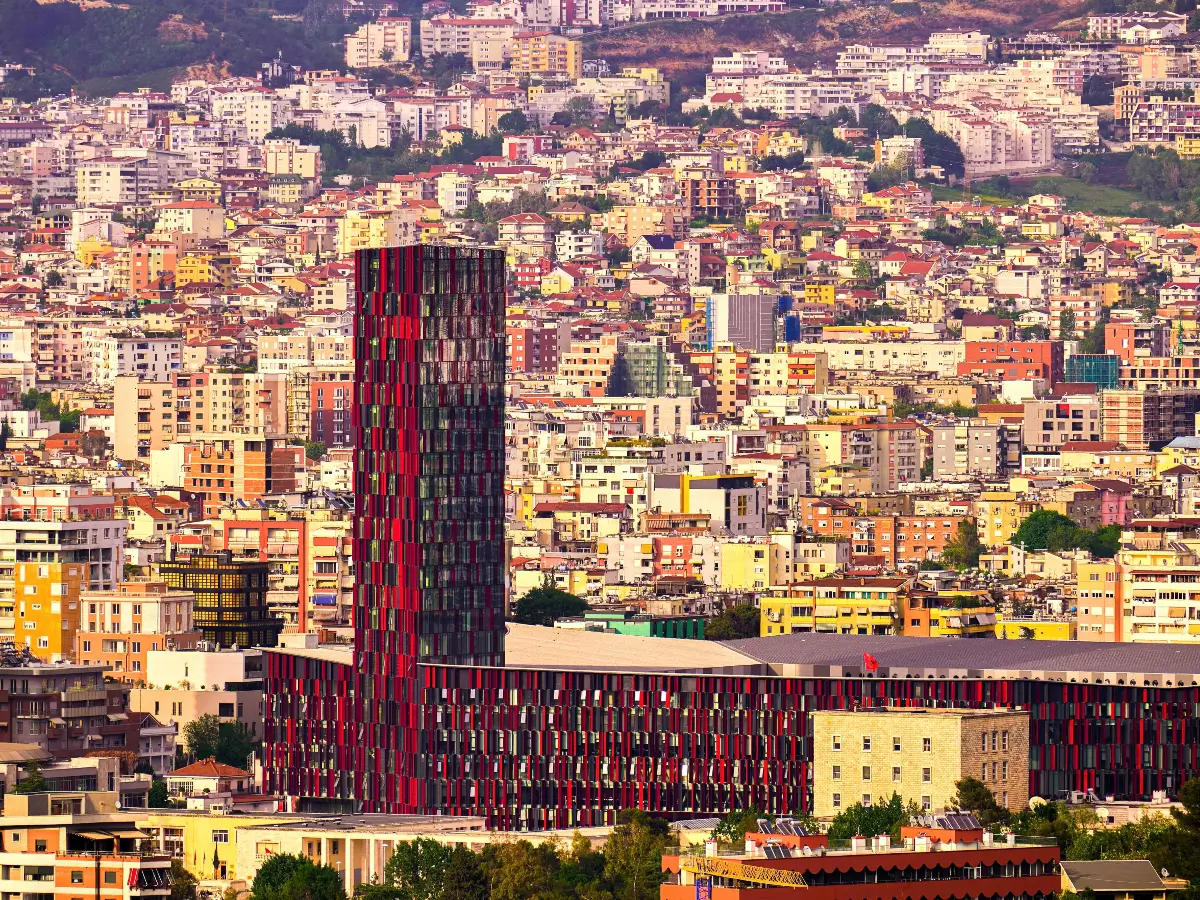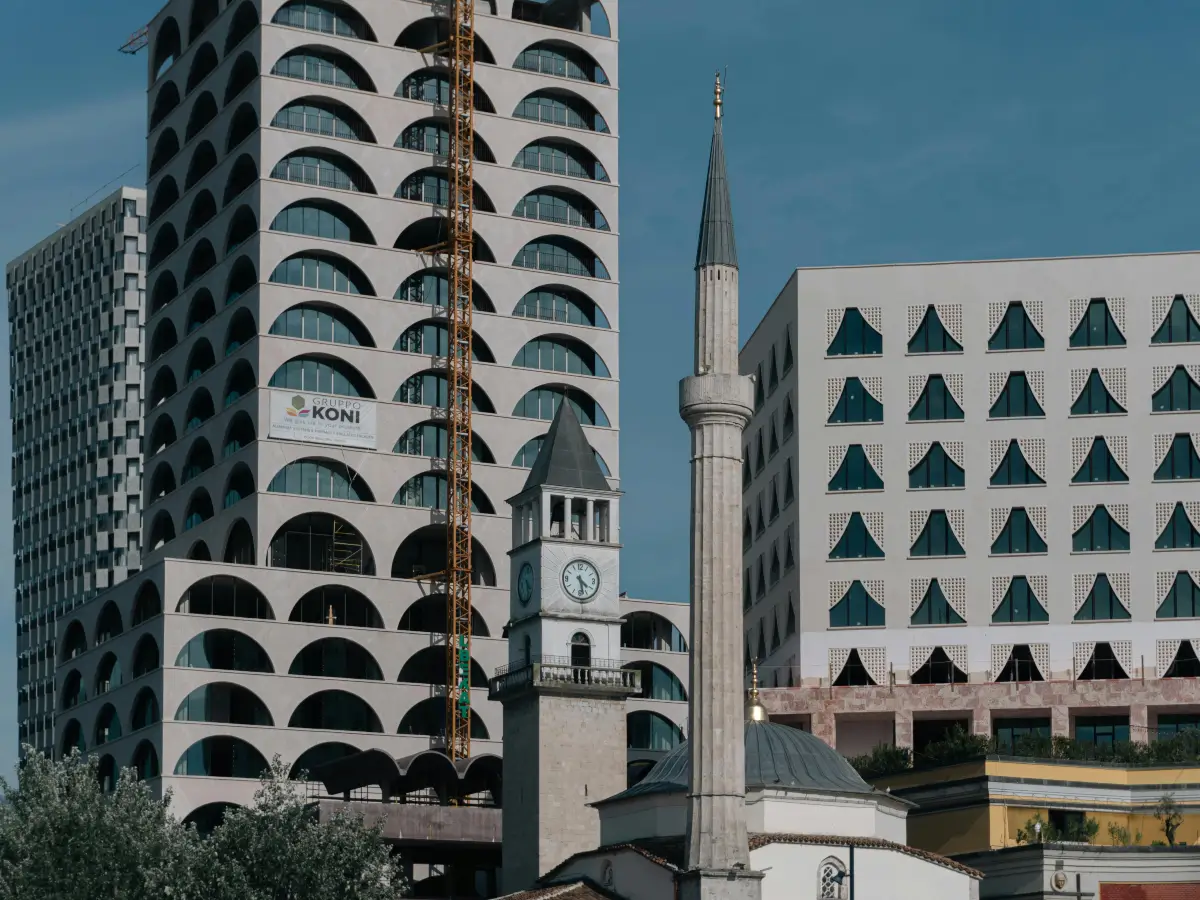Two decades ago, Tirana was a very different place. The city was marked by gray concrete, chaotic traffic, unreliable infrastructure, and leftover traces of communism. Streets were dimly lit. Public spaces were neglected. Buildings were worn and uniform.
Today, Tirana stands out as one of the fastest-evolving capitals in Southeast Europe. Colorful façades, high-rise towers, pedestrian zones, cultural events, and bike paths have replaced much of the city’s old image. The transformation is not only physical — it’s social, economic, and generational.

From concrete to color
One of the most symbolic changes began in the early 2000s, when former mayor Edi Rama launched a citywide project to repaint apartment blocks in bright colors and patterns. What started as a low-cost attempt to boost morale became a larger movement that visually redefined Tirana.
Paint gave life to faceless buildings, attracting media attention and civic pride. Soon after, the city began redesigning public spaces, removing illegal structures, and adding green zones and lighting. This early phase laid the foundation for Tirana’s identity shift — from post-communist capital to emerging European city.
Key developments that reshaped the city
Tirana’s growth over the past 20 years has touched nearly every part of urban life:
-
Public squares and pedestrian zones were redesigned, most notably Skanderbeg Square, which was expanded and turned into a walkable central space
-
Lana River cleanup removed illegal constructions, improved pathways, and added landscaping
-
Infrastructure upgrades, including water, lighting, and public transport systems
-
Expansion of parks, especially Grand Park of Tirana, with added trails, recreational zones, and lakeside areas
-
High-rise and mixed-use development, including the Air Albania Stadium, new residential towers, and foreign-funded urban projects
-
Cultural revival, with museums, art festivals, and youth-focused initiatives growing steadily
The visual and structural shift has made the city more walkable, livable, and attractive to both locals and foreigners.
Demographic and economic shifts
Alongside the physical transformation, Tirana has also experienced rapid population growth. People from across Albania — especially from smaller towns and rural areas — have moved to the capital in search of work, education, and better services.
The city’s population has grown by hundreds of thousands since 2000, leading to rising demand for housing, education, and infrastructure. This shift has changed the character of entire neighborhoods, with traditional low-rise homes giving way to apartment blocks and commercial zones.

Economic activity has diversified. Tirana is now home to creative industries, startups, foreign investors, and international schools. The service sector has expanded, and tourism — once limited to a few central sites — has become part of the city’s image.
Challenges that remain
Despite the improvements, Tirana’s rapid development has also brought pressure. Traffic congestion remains a problem, especially as car ownership has increased. High-rise construction has triggered debates over zoning, green space, and cultural preservation. Gentrification has affected traditional communities, and infrastructure still struggles to keep up with growth.
Urban planning continues, but at a pace that must balance modernization with sustainability.
A city still evolving
Tirana’s transformation is far from complete. The city remains a place of contrasts — where old and new collide, and where challenges often coexist with progress. But compared to its image in the early 2000s, the difference is dramatic. Tirana has redefined itself in just one generation, and its evolution continues with each new project and wave of residents.